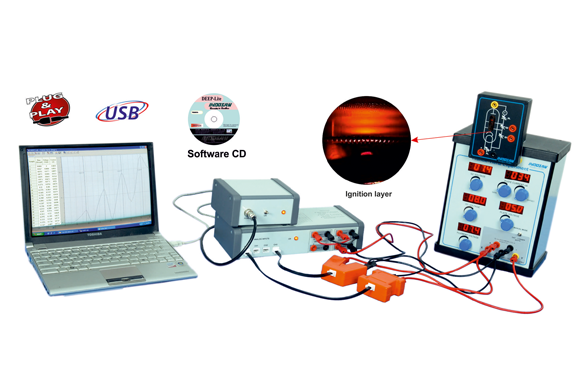
Principle and Working:
The Franck-hertz tube consists of an electron-emitting cathode, two mesh grids for accelerating electrons and an anode plate for collecting electrons. It is filled with a low pressure gas. The mesh grids provide the accelerating potential to electrons and the anode is held at slightly negative potential to provide braking.
...
At low accelerating potential, the electrons gain kinetic energy and reach the anode plate with purely elastic collisions with the gas atoms. As accelerating potential is increased the gas atoms absorb energy as they are excited due to in-elastic collision by the energized electrons. Thus fewer electrons reach the anode plate and there is a dip in the plate current. These dips in current is observed at approximately fixed intervals of accelerating potential which demonstrate the presence of discreet or quantum energy levels in the Bohr’s model of atom.
In the present Franck-Hertz experiment with neon gas, the absorbed energy by neon atoms is released through photons having red-orange wavelength, which can be visually observed in band formations. The experiment can be performed in manual mode where the accelerating voltage and the plate braking voltage can be manually controlled in SK090. Also with sensors and data logger in Sk087 the accelerating voltage can be automatically varied and plate current measured & displayed graphically on PC
Trailing items supplied with SK087 only